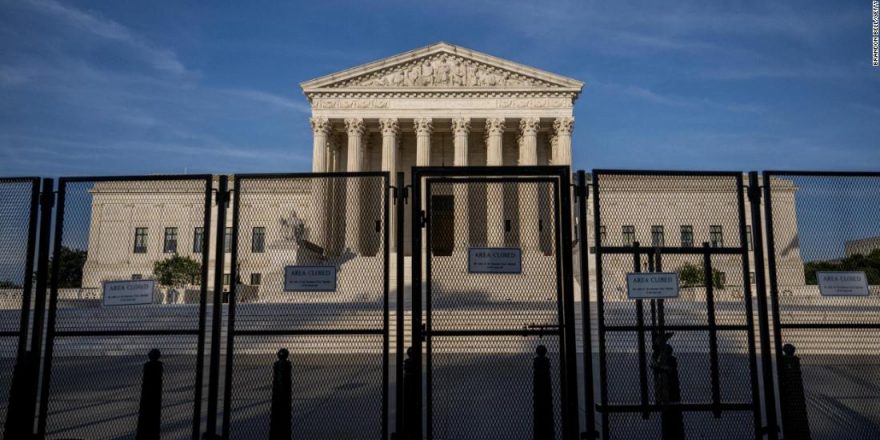When Jan. 6 hearings are on, Trump fans turn Fox off
New York (CNN Business)A version of this article first appeared in the “Reliable Sources” newsletter. You can sign up for free right here.
Where will you be at 10am ET on Thursday? Like tens of thousands of other people, I will be scanning the SCOTUSblog live blog for live coverage of the Supreme Court’s decisions.
With 13 cases remaining in this term, the court will hand down some opinions on Thursday, more on Friday, and most likely next Monday as well. Every time, attorneys and reporters and TV anchors and pundits will be monitoring SCOTUSblog to get a jump on the news. The 20-year-old site is exactly what it sounds like: A blog committed to just one thing, comprehensive coverage of the Supreme Court. And it has a rare combination of traits: cult-like status, hard-won credibility and widespread respect across the news world.
The site was founded by Tom Goldstein and Amy Howe, a husband and wife team who care deeply about the judicial branch. (More on that in a moment.) Right now they can sense that interest in the court is intense: “In terms of waiting for several decisions that we expect to be truly historic, I would say that this June is definitely one of a kind,” Howe told me. “We’re waiting on potentially huge decisions on abortion and gun rights, along with several other high-profile cases on religion and the environment. And with the leak of the draft opinion in the Mississippi abortion case last month, the public has really focused its attention on the Court in a way that I have not previously experienced.”
Howe said the closest analogy to 2022 would be the court’s decision about the Affordable Care Act, upholding the individual mandate as a tax, in 2012. SCOTUSblog was credited back then with being the first news outlet to report that the law had been upheld.
Traffic was off the charts that day. Nothing can compare to it. But this term has been quite active: Traffic this June is “significantly higher than the same period over the last five years,” Howe said.
I asked her how SCOTUSblog has evolved over the past 20 years, since virtually everything else about the internet has changed during that time span. “Like just about everyone else, the blog now has more of a focus on getting our stories published quickly — even if it’s not as lightning-fast as many news sites,” she said. “And although many of the blog’s readers are lawyers or law students, I have tried to make my coverage as accessible as possible for lay audiences.” Accuracy and clarity are always the most important attributes… Turning the site into a destination that people feel they can trust…
A public service model
“Since its founding in 2002, SCOTUSblog has developed into the preeminent source for Supreme Court news, commentary and research,” Bob Ambrogi of LawSites wrote last year. The blog has an unusual business model, which is to say, not much of a business model at all.
Goldstein, a partner at Goldstein & Russell, P.C., has argued dozens of cases before the justices. He views SCOTUSblog as a “public service,” he told me, not a profit-seeking venture. In fact, it loses about $400,000 per year, mostly because it employs several full-time staffers. “But it does have a little indirect effect on my reputation as a lawyer,” he noted. He has mulled a subscription model, but said “I just don’t see the people we most want to educate deciding to pay.”
Over the years the site has expanded out to platforms like Twitter, TikTok and the podcast universe. “Having more ways to educate the public about the court is, on net, a good thing,” Howe said…
Thirteen cases remaining
On top of the blockbuster cases and the unprecedented leak, “there’s also something else going on” with this term, CNN’s Ariane de Vogue said on “The Lead” the other day. It’s the fraught political atmosphere, with fences around the courthouse and security details assigned to the justices and digital instead of in-person interaction.
“Usually, at the end of June, we go into the court,” de Vogue said. “The justices come out from behind that crimson curtain, and they read the opinions of the big cases of the term, and they read the dissents. That’s not going to happen this time around. Ostensibly because of Covid, the courtroom itself is closed down. We’re simply going to get these major opinions — changing the shape of society — just over the internet, without the justices doing any explaining. That’s unprecedented, but that’s also really symbolic of these fraught times…”
Source: Read Full Article

